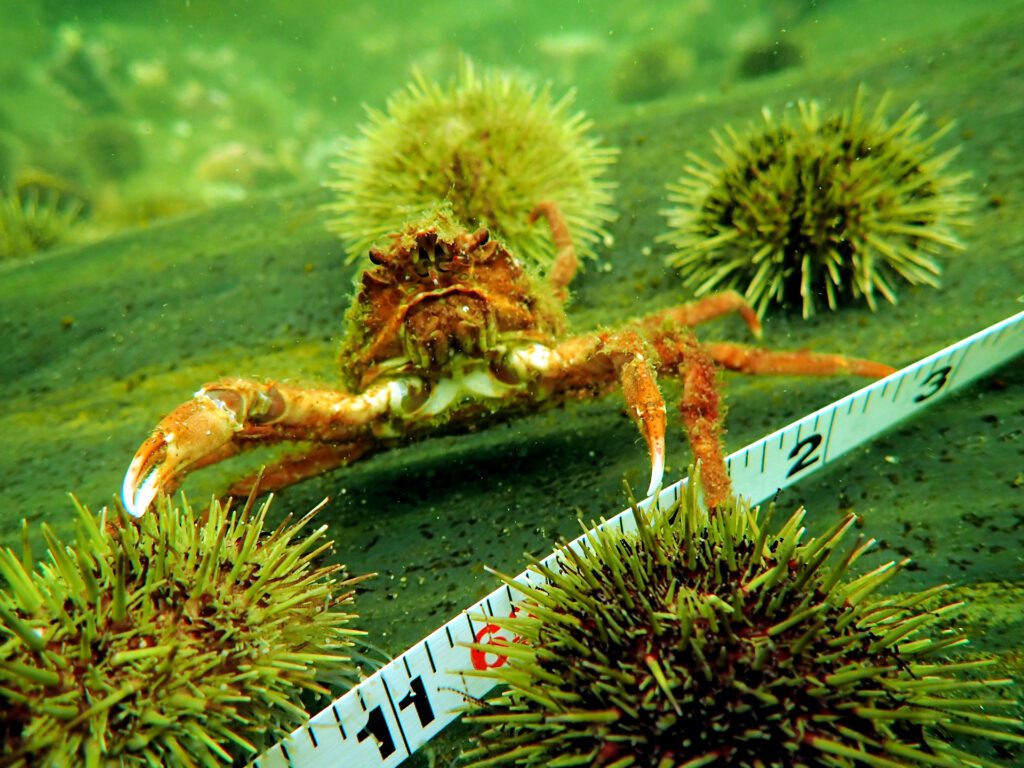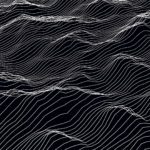Q&A with Valesca de Groot
With leaky housing kits and uncooperative models brushing you off with a flip of a fin or dismissive pincer, photographing life under water requires planning and patience.
For Valesca de Groot, a Master of Science candidate and Reef Life Survey diver, underwater photography is as much a day’s work as it is a passion. Currently, she is conducting her graduate research at the Memorial University of Newfoundland studying otoliths (a fancy word for a fish’s ear bones) to see if climate-redistributed Atlantic cod populations have reduced productivity.
Valesca was a 2020 Visualizing Science Contest participant whose image “Capelin Dancing in Line” was selected for the 2021 cover of Canadian Journal of Fisheries and Aquatic Sciences.
What is the biggest challenge you face with underwater photography and what advice would you share to navigate this challenge?
I am still relatively new to underwater photography! I was only introduced to DSLR underwater photography with the housing and all about a month ago, which allows me to control way more aspects of my shots than I previously did with the Olympus TG 5 I used for scientific underwater surveys. The TG 5 is what I used for my shot “Capelin Dancing in Line”, and with that, it was just a matter of pointing and shooting when the time was right.
I realize now with my DSLR set up there are so many more aspects of a photo you can control for before even coming across that perfect shot. That is the hardest thing for me—knowing how to manipulate the ISO, aperture, and shutter speed settings, and visualizing that perfect shot, before getting that unique fleeting moment with a fish or a crab. To navigate this, I recommend fiddling around with a DSLR camera above ground before taking it under water—I have had my personal Canon 60D set up for about two years now, and being able to play around with these settings before even hopping into the water has helped me tremendously!
Finally had the opportunity to submerge the @PhysDivLab‘s d7500 Nikon w Ikelite housing kit last week – and no leaks! Now moving on to macro photography that doesn’t just involve my dive buddy and pool buoys. Big shout out to @AmandaEBates for helping me develop this skill! pic.twitter.com/mURA849oxz
— Valesca de Groot (@ValescadeGroot) June 9, 2021
Tell us about a time when taking a photo under water didn’t go as planned.
I was introduced to underwater photography on snorkeling trips with my family growing up. I had a nice little compact Nikon Coolpix camera for a long time, but once I started diving, I couldn’t take it with me due to depth/pressure limits. My brother got me a Sony Action for Christmas last year in order to allow me to go a bit deeper with my underwater photography, which has been such a great introduction to shooting while diving! The thing with that camera is there is no LCD screen and the lens is angled slightly higher than usual, so there were definitely lots of pictures of half a fish or the very tip of a lobster for a while before I learned how to point it correctly.

Temperamental toad crab on transect | Valesca de Groot
What is something you want to capture an image of under water in the future?
Before my move away from the lovely east coast of Newfoundland, I would love to take a macro shot of the rocky reef that really showcases the beautiful colours that cover the sea floor here. When people think of the North Atlantic and the East Coast of Canada they think: less biodiversity. While this is overall true, the pinks of the crustose coralline algae, the greens of those abundant green sea urchins, and the various colours of Asterias rubens bring the seafloor to life in their own way. I would love to capture that!




